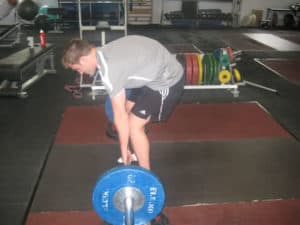A bulging or herniated disc occurs when an intervertebral disc, which serves as a cushion between the vertebrae, loses its typical shape and compresses a spinal nerve. To understand what a bulging or herniated disc is, let’s dive into what a intervertebral disc is. An intervertebral disc has two main parts: an outer shell of fibrous cartilage (the annulus fibrosis) and an inner jelly-like material (the nucleus pulposus)(1). The outer wall can become weakened for a variety of reasons. Excessive strain can rupture the annulus fibrosis. Poor diet and exercise habits can also weaken the disc. But for this blog lets touch upon poor movement and technique when lifting. Because that’s how most injuries occur in the weight room.
Most injuries that occur in the weight room are due to poor movement and technique when lifting. Over time poor technique creates tiny amounts of trauma to your body that eventually accumulate and lead your body over the proverbial ‘tipping point’ into injury. Have you ever heard of kinesiopathologic model? Most likely not. This model has a fancy name but the idea behind is key to fixing your pain. Start by finding out what movement problems led to injury developing in the first place!

Reference
1. “Bulging Disc Surgery – Bulging Disc Symptoms and Causes.” North American Spine, northamericanspine.com/conditions/bulging-disc/.
